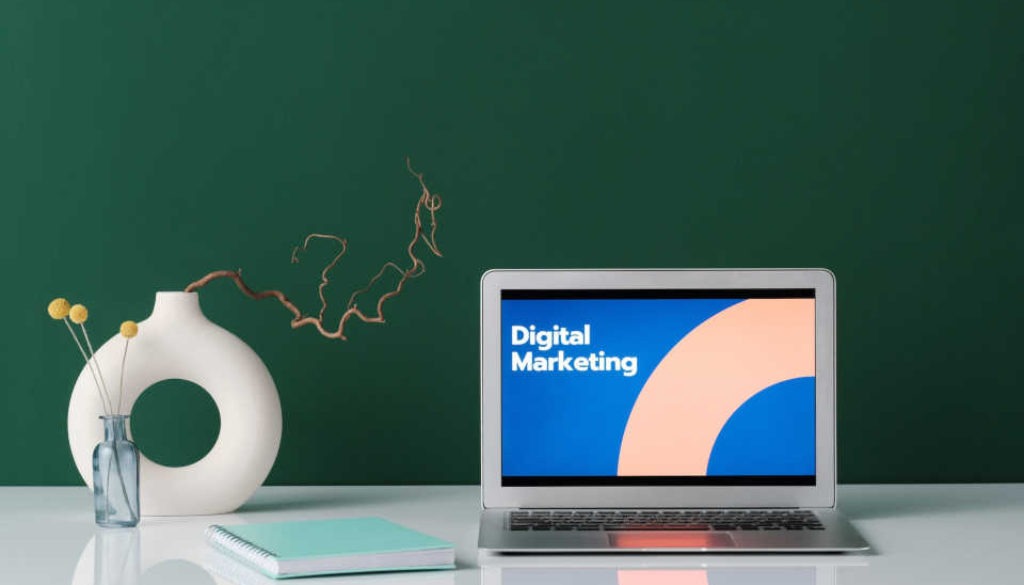Digital Marketing-Everything You Need to Know
What is digital marketing?
Digital marketing is the process of using online channels to promote or market products and services. It involves the use of various digital tools and platforms to reach and engage customers. The key aim of digital marketing is to convert leads into customers, and ultimately, drive sales. It includes the use of email, websites, social media, mobile phones and other digital channels to reach consumers. Digital marketing has become increasingly popular over the years, as more businesses turn to the internet to promote their products and services. In this article we will reveal to you some of the most popular and successful methods to use digital marketing to your advantage.
The history of digital marketing
Digital marketing has been around since the 1950s, when researchers working on an early form of the internet developed a way to send messages between computers. This system, known as packet switching, was later adapted for commercial use by marketing companies. In the 1980s, digital marketing took off with the advent of the personal computer and email. Marketers began using these new tools to reach out to consumers directly, and the first online ads appeared. Digital marketing has come a long way since its humble beginnings. What started as a way to send emails en masse has grown into a complex, data-driven marketing tool that helps businesses reach their target audiences. In this article, we’ll take a look at the history of digital marketing and how it has evolved into the powerhouse it is today.
The benefits of digital marketing
Today, digital marketing is an essential tool for businesses of all sizes to reach their target audiences. By utilizing digital channels such as search engines, social media, and email, businesses can connect with customers and prospects in a way that is both cost-effective and efficient. There are many benefits of digital marketing, including the ability to reach a laser-targeted audience, the ability to track results, and the opportunity to customize messages for specific demographics. Additionally, digital marketing is a more sustainable form of marketing than traditional methods, such as print or television advertising. Some of the key benefits of digital marketing is that it allows marketers the ability to reach a large audience with minimal effort, track results and the ability to adapt campaigns quickly if needed.
The types of digital marketing:
Search Engine Optimization (SEO)
Any business that wants to have a successful website needs to invest in search engine optimization (SEO). SEO is the process of improving the visibility and ranking of a website on search engines such as Google, Bing, and Yahoo. A website with good SEO will appear higher on search engine results pages (SERPs), and will get more visitors. There are many factors that contribute to good SEO, such as using relevant keywords, having quality content, and having a mobile-friendly website. The Internet has grown into a vast platform that offers an infinite number of opportunities to get online and be noticed. There are countless websites competing for attention, so you need to take the time to optimize your website and make sure it can target and attract the right traffic.
Content Marketing
Content marketing is a type of marketing that involves creating and sharing online material (such as videos, blogs, and social media posts) that does not explicitly promote a brand but is intended to stimulate interest in its products or services. The goal of content marketing is to build brand awareness and create an audience of potential customers. In a world where technology and the internet have taken over, it’s no surprise that content marketing has become one of the most popular and effective ways to reach an audience. But what is content marketing? Simply put, it’s a form of marketing that focuses on creating and sharing valuable content to attract and retain customers. By providing informative and entertaining content, businesses can build trust and credibility with their target audience, which leads to more conversions and sales.
Social Media Marketing
In its simplest form, social media marketing is the process of using online platforms like Facebook, Twitter, and LinkedIn to build relationships and interact with potential and current customers. By publishing content, engaging in conversations, and running ads, businesses can create a connection with their target audience and promote their products or services. What sets social media marketing apart from traditional advertising is that it can be used to market to people who are not actively looking for your product or service. When done correctly, social media marketing can be an effective way to drive leads, build brand awareness, and boost sales. When it comes to social media marketing, there are a lot of different platforms out there. It’s important to remember that social media marketing is about much more than just selling stuff. Social media marketing is all about building relationships and engaging with your audience. This means that you need to be active on the platform, sharing valuable content and interacting with users regularly. To be successful you will need to focus on creating valuable content, building relationships with your audience, and being active on the platform. If you can do these things, you’ll be ahead of the game.
SEM/Pay Per Click (PPC)
Search engine marketing, or SEM, is a type of online marketing that helps promote websites by increasing their visibility in search engine results pages (SERPs). SEM includes pay-per-click (PPC) advertising, cost-per-click (CPC) bidding, and organic search optimization. PPC, or pay-per-click, is a type of online advertising in which businesses pay a fee each time one of their ads is clicked. It’s a way for businesses to get their products and services in front of potential customers with minimal effort. PPC can be an effective way to drive traffic to your website and generate leads. Cost-per-click, or CPC, is similar to PPC in that businesses pay a fee each time someone clicks on their ad. However, unlike PPC, not all clicks are created equally. For example, if a business has a CPC of $1.00 but only receives a click from an individual who is not in their target audience, that click would be considered a wasted one. While the cost of PPC and CPC advertising is often borne by the business, the cost to a consumer can be as high as $20.00 per click, depending on how competitive the keyword being targeted is.
In general, the more focused a business is on a specific niche market, the less they will have to pay per click. PPC, or pay-per-click, is an online advertising model in which businesses can display ads on search engines and partner websites. Ads are displayed based on keywords that are relevant to the advertiser’s business, and businesses only pay when their ad is clicked. This makes PPC an effective way to reach potential customers who are actively searching for the products or services that you offer. CPC advertising can be used by businesses that are targeting a very narrow market such as a specific state or city. Targeting a specific niche can also help to improve your click through rate. You are more likely to get clicks on your ad if the keywords you are bidding on are relevant to the products or services you offer.
Affiliate Marketing
Affiliate marketing is a type of performance-based marketing in which a business rewards one or more affiliates for each visitor or customer brought by the affiliate’s own marketing efforts. The industry has four core players: the merchant (also known as ‘retailer’ or ‘brand’), the network (that contains offers for the affiliate to choose from and also takes care of the payments), the publisher (also known as ‘the affiliate’), and the customer. Merchants facilitate the sales between the merchants and the affiliates. Affiliates generate revenue by committing a portion of leads or sales they refer to their merchant. Affiliate marketing is a type of performance-based marketing in which a business rewards one or more affiliates for each visitor or customer brought by the affiliate’s own marketing efforts. It is a modern variation of the practice of paying finders’ fees for the introduction of new clients to a business. This can be a great way to earn extra income if you are good at promoting products and services.
The industry has four core players: the merchant (also known as ‘retailer’ or ‘brand’), the network (that contains offers for the affiliate to choose from and also takes care of the payments), the publisher (also known as ‘the affiliate’), and the customer. Merchants facilitate the sales between the merchants and the affiliates. Affiliates generate revenue by committing a portion of leads or sales they refer to their merchant.[2] Merchants receiving a large percentage of their revenue from the affiliate channel can become reliant on their affiliate partners. In turn, affiliates who receive a large portion of their revenue from one merchant can become reliant on that merchant. Because of this, affiliate marketing is often seen as unstable because of the potential for sudden changes in affiliate revenue. Advertisers typically avoid affiliate marketing networks that have a high risk of dependency. Affiliate marketing is commonly confused with referral marketing, as both forms of marketing use third parties to drive sales to the retailer.
Native Advertising
Native marketing is a term that is used to describe a type of marketing that is designed to blend in with the content on a website or other platform. It is often used by companies that want to advertise on popular websites or platforms, but don’t want their ads to stand out and be intrusive. Native marketing can take many different forms, but all of them are designed to look and feel like regular content, rather than an ad. One of the first examples of native marketing was the inclusion of brand names on television programs. The practice continues today, although it is more subtle and less frequent than it once was. Another form of native marketing is product placement in movies and television shows. This is perhaps one of the most effective methods of native advertising because it is so subtle that it is often not recognized as an advertisement. It also helps to sell a product in which viewers have already shown some interest due to their engagement with the program. The fact that native advertising is so subtle makes it a very effective form of marketing. The reason for this is that it is more likely to be read or watched by the consumer and therefore more likely to be effective.
Marketing Automation
In today’s business world, marketing automation is an almost essential tool. It allows businesses to automate repetitive tasks, freeing up time and resources that can be better spent elsewhere. Marketing automation can also help businesses to track and measure their marketing campaigns, making it easier to see what is working and what isn’t. With so many benefits, it’s no wonder that marketing automation is becoming increasingly popular. Here are a few examples of how businesses are using marketing automation to their advantage.
The first stage in setting up marketing automation is to plan what you want to automate. For example, if a lead comes into your funnel, you may want to trigger an email campaign for that lead. In addition to the marketing automation, if you are using an e-commerce platform like Shopify, then you can also automate some of your online store settings. For example, if a customer buys an item from your store, you can trigger the settings to automatically send them a receipt for the purchase. In recent years, digital marketing has become an increasingly popular way for businesses to reach their target audiences.
If you’re considering using marketing automation for your business, there are a few things you should keep in mind. First, make sure that you have a clear understanding of what marketing automation is and how it can benefit your business. Second, consider your budget and whether or not you have the resources to invest in a good marketing automation system. Finally, think about your goals for using marketing automation and make sure that the system you choose will help you achieve those goals.
Marketing automation is an incredibly versatile tool, so you can use it for a variety of different situations. From lead generation and relationship building to sales follow up and direct response, marketing automation can be used in nearly any situation. When used correctly, marketing automation can be a powerful tool to help businesses improve their customer engagement, increase leads and sales, and boost efficiency.
Email Marketing
Email marketing can be done to either a consumer or business audience. Email marketing is when businesses send messages to people using email. It’s like when you write a letter to your friend and put it in an envelope. Email marketing is just like that, except the letter goes through the internet instead of being mailed in an envelope! Businesses can use email marketing to tell their customers about new products or special offers. It’s a great way for businesses to communicate with customers and make sure they don’t miss out on important information. Oftentimes email marketing is conducted via an email autoresponder. An autoresponder is a software that automatically responds to emails sent to a specific address. It is often used by businesses to provide customers with automated customer service or to send out automatic marketing messages. Email autoresponders can be set up to send out a response immediately after an email is received, or they can be programmed to delay the response for a certain amount of time. Some of the most popular one’s used today are MailChimp, Constant Contact or maybe you’ve even heard of Aweber.
Online Press Release
An online press release is a great way to get the word out about your latest news. You write a press release and submit it to a site like PR Newswire or PitchEngine. Your release is then distributed to journalists, bloggers, and other influencers. If they’re interested in your story, they’ll write about it and help spread the word. Many free press release sites will also let you pay to include your news in more places and reach more people.
Inbound Marketing
Inbound marketing is an effective way for businesses to attract customers and generate leads. By creating content that provides value and speaks directly to a target audience, companies can develop relationships with potential buyers. This type of marketing approach focuses on reaching out to customers through organic search engine optimization (SEO) tactics, social media platforms, blogs, email campaigns, and more.
Inbound marketing offers a unique advantage over other types of marketing strategies such as outbound advertising or direct mail campaigns. Instead of pushing ads out to consumers who may not be interested in the product or service being offered, inbound marketing uses content tailored specifically for potential buyers who are actively searching for solutions related to the company’s offering. Through this approach businesses can engage with their target audience in a meaningful way while also saving them time and resources by focusing on qualified leads who are already interested in their offerings.
Guest Posting
Guest posting is a popular way to promote your business and build relationships with other members of your industry. It involves writing an article or blog post for another website, usually one that is related to yours. This type of content allows you to reach new audiences and expand your customer base. By becoming an active participant in the online community, you can create meaningful connections with other professionals and tap into their network of followers. Guest posts allow you to demonstrate your knowledge on a particular topic and showcase your business’s areas of expertise. Additionally, it gives you the opportunity to acquire valuable backlinks from high-authority websites which helps increase visibility for both parties involved. Overall, guest posting is a great way to spread awareness about your brand’s products and services while building relationships with industry influencers in the process.
SMS Marketing
SMS marketing, or short message service marketing, is a powerful way for businesses to reach their target audience quickly and easily. By sending promotional messages directly to customers’ phones, companies can inform them about upcoming events and sales, as well as provide helpful tips and advice related to their product or service. This type of marketing has become increasingly popular in recent years due to its cost-effectiveness, speed of delivery and potential for high engagement rates. SMS messages are sent via text message from an automated system that stores customer contact information. Companies typically use SMS services like Twilio or Textlocal to create campaigns that can be customized with personalization tags like first name, last name and company name.
Conclusion:
In conclusion, digital marketing is a vast and ever-growing field that offers tremendous opportunities for businesses to connect with their customers. From creating an effective website to using SEO, PPC, and email campaigns to optimizing content and utilizing social media, there are many ways that digital marketing can help businesses reach their goals. It is important for businesses to understand the tools available in order to make sure they are leveraging them correctly. If you are looking for digital marketing help, call 203-296-0995 or email [email protected]



